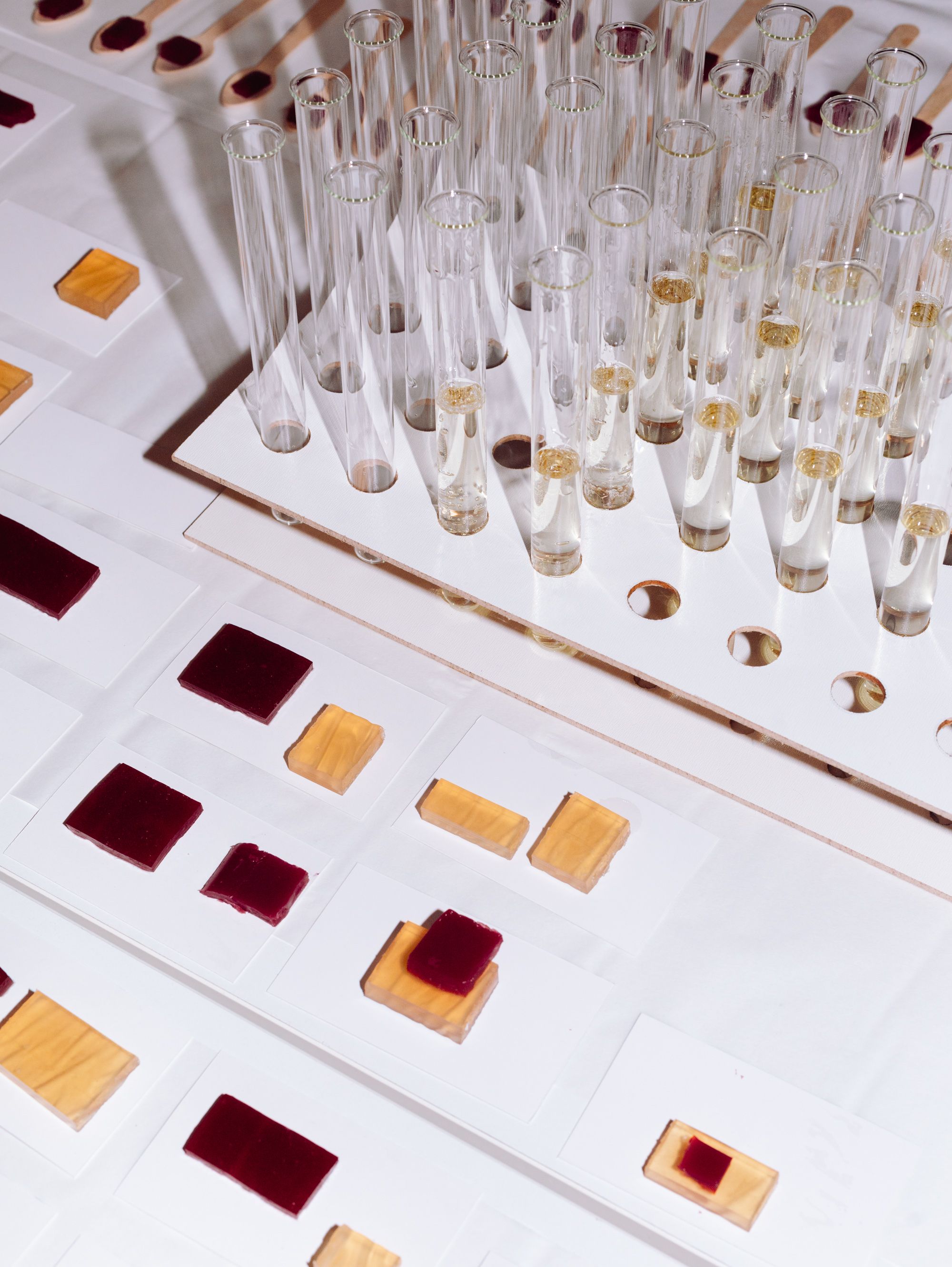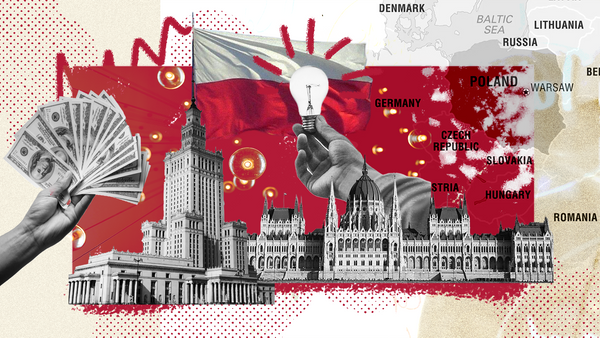Pinches of pink sweater fluffs and the pungent smell of fermentation separately overwhelm my senses, while an educational installation on parchment papers draws my attention to simple but less-known processes that will influence the future. Good thing we have the K11 Lab in Budapest, which brings us tactile and otherwise closer to the ever-expanding, infinite world of bioplastics.
Patrícia Harsány is far from being an ordinary object creator—we have already presented her history of quarantine embedded in jewelry, interpreted by Noémi Viski, curator of K11 Labor, and now they have created an exhibition called Cooking Plastic, on a completely different topic. Patrícia is a constantly renewing artist as a jewelry designer—so much so that she even likes to design temporary jewelry out of liver pâté. This time, however, she was inspired by her months spent at the Basque BioDesign Center’s material library, where she researched recipes for various bioplastics. Cooking Plastic presents the results of these recipes and even gives an insight into these unique, yet seemingly ordinary processes.





“Heat the water, then add glycerin and gelatin before it reaches the boiling point. Mix until it becomes smooth and add a pinch of pink sweater bobbles. Pour the mixture into a mold and let it cool in a dark place. The next day it will be ready to use! But what exactly is it for?”—says the exhibition space, which has been transformed into a kitchen, where you can really feel like you are in a gastro-lab. The production of bioplastics and synthetic materials made from textile waste is reminiscent of cooking, and the analogy with bioplastics and upcycled materials is also based on the principle of ‘cooking with what we have’. The aim is to work with materials that have a small ecological footprint and were previously considered waste. These processes are illustrated by the creative team using the example of kombucha and sweater fluffs. The kombucha-based bioplastics grow through the fermentation process, and the resulting bacterial cellulosic materials can be used in a variety of ways, from food to fashion design. In upcycling, synthetic materials can be found alongside bio-ingredients, giving new life to a fabric sample. At the exhibition, we can touch them too, as the aim is to get as close as possible to these solutions and become part of them ourselves.









The use of bioplastics is an open question, whether we are designers consciously working with biodesign, eco-warriors, or curious passers-by. So we came across ideas ranging from biodegradable festival wristbands to lampshades and packaging paper.
Heaters, recipes, and stretched-out sweaters: in addition to the installation design, Cooking Plastic is also trying to engage the public with other informative programs. Thanks to this, we will have the opportunity to really learn about the cooking process in the Kombucha Bioplastic Workshop and to make fabric samples from our own textile balls in the FLUFF! workshop. The open events will not end when the exhibition is over, as the organizers will hold a camp for high school students at the end of July, with a sustainable artifacts theme.
Curator: Noémi Viski
Installation design: Veronika Róza Háló
Graphic Design: Adrienn Umlauf
The materials were created with the support of the Basque BioDesign Center.
On view: 14. 06. 2023 – 04. 07. 2023.
Photos: Dániel Gaál
Cover photo: Imre Balázs Szentesi

Klimt’s last painting sets European record

Everything happens for a reason—CAUSE Roastery










